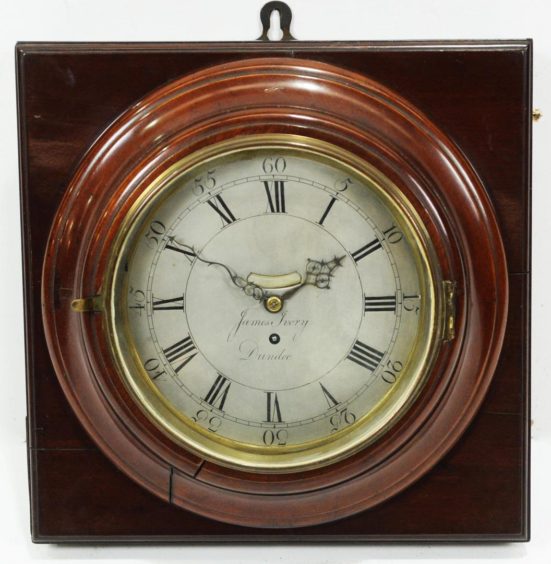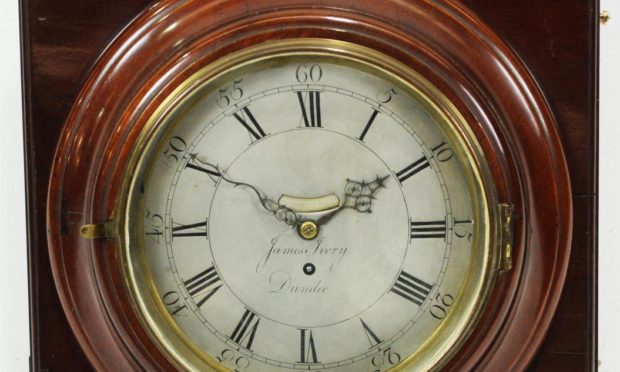It is difficult to pinpoint the greatest Scottish clockmaker. Among them is certainly that master of complication, John Smith of Pittenweem.
James Ivory is not far behind. Ivory (1729-1793) is probably Dundee’s best-known clockmaker. He gained his apprenticeship in London, returned to Scotland and lived and worked in Dundee until his death.
Ivory rose to considerable eminence as a clockmaker far beyond Dundee but, locally, he is best known for making the clock in the 132ft spire of St Andrew’s Parish Church, Cowgate. The McManus owns a fabulous longcase example, too.
Ivory also served as a Dundee town councillor from 1768 until 1789. It was while acting in this capacity that his eldest son, mathematician Sir James Ivory, was appointed a teacher at the Dundee Academy.

Ivory’s output was not prolific. He worked on many pieces himself and did not have a large staff. He engraved his own watch movements, and parts for his clocks were often made by hand in Dundee rather than being ‘bought in’.
Serial numbers on Ivory’s pocket watch movements between 1762 to 1768 indicate that he produced about a dozen a year. Between 1770 and 1772 this output rose to around 50. By comparison, other makers were putting out hundreds of movements, apprentices performing much of the donkey work.
Ivory’s only known apprentice was his younger son Thomas. Another local church continues to use a tavern-style clock exactly where Thomas Ivory placed it two hundred years ago.
Anderson & Garland Ltd of Newcastle last month offered a late 18th Century wall clock contained in a circular mahogany case, its silvered dial engraved ‘James Ivory, Dundee’.
It sold for £720.
Picture: James Ivory wall clock, £720 (Anderson & Garland, Newcastle).
More in this series:
Chanel ‘little black dress’ is the earliest example ever to come on to the market











